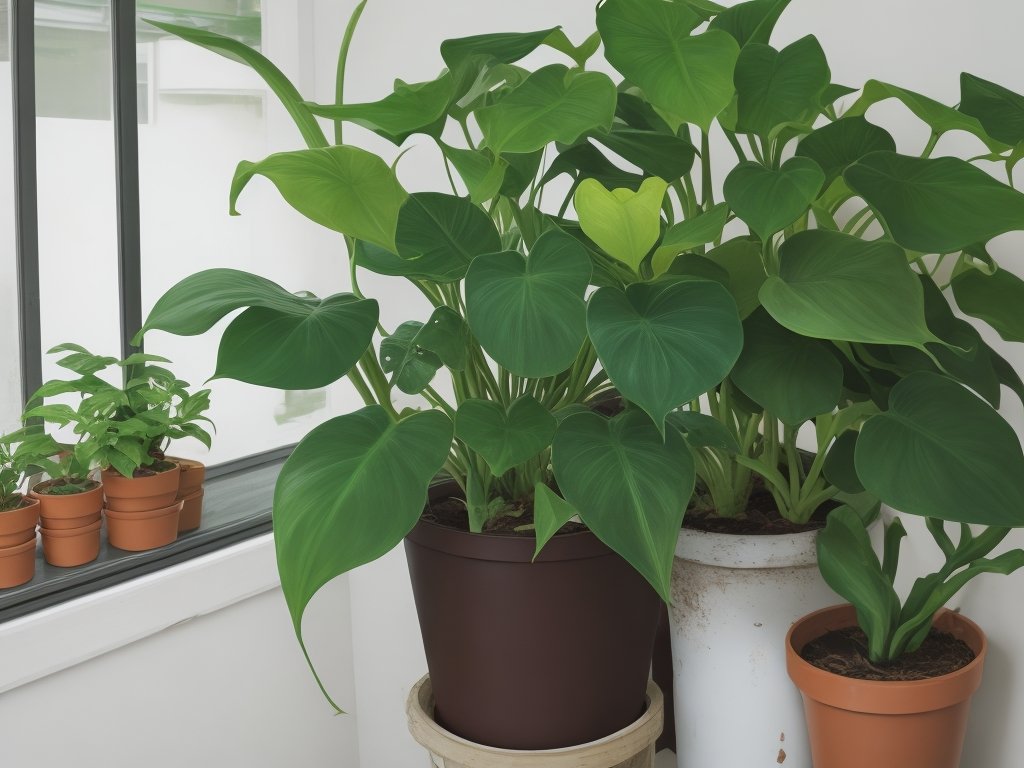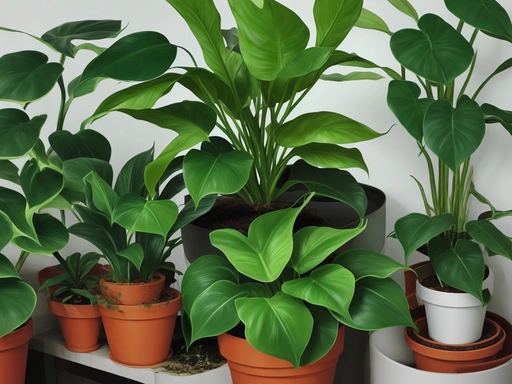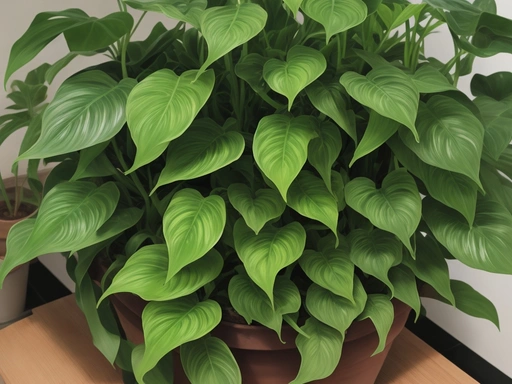Philodendron Natural Habitat: An Exotic Haven
Key Takeaways:
- Philodendron plants naturally thrive in tropical rainforests.
- They prefer high humidity and indirect sunlight.
- Philodendrons require well-draining soil to prevent root rot.
- Regular pruning helps maintain the health and beauty of these plants.
Imagine stepping into a vibrant, lush forest where the air is thick with humidity and the canopy above bursts with green foliage. In this enchanting realm, you’ll find the Philodendron, a plant that thrives in its natural habitat – the tropical rainforests.
With its stunning leaves and ability to adapt to various environments, the Philodendron is a true marvel of the plant kingdom.
Join me on a journey as we explore the unique features of the Philodendron and discover why conserving its natural habitat is crucial for its survival. Get ready to delve into the captivating world of this remarkable plant!
| Philodendron Species | Natural Habitat |
|---|---|
| Philodendron hederaceum | Tropical rainforests in Central and South America, including the Amazon basin |
| Philodendron bipinnatifidum | Tropical rainforests in South America |
| Philodendron selloum | Native to rainforests in Brazil and Paraguay |
| Philodendron gloriosum | Found in the rainforests of Colombia and Ecuador |
What is Philodendron?
Philodendron is a type of tropical plant known for its lush and trailing foliage.
Brief introduction to Philodendron plants
Philodendron plants are popular houseplants known for their attractive foliage. They belong to the Araceae family and are native to tropical regions of Central and South America.
Philodendron plantsen leaves and ability to adapt to various environments, Philodendron plants have become favorites among indoor gardeners.
They come in a variety of shapes, sizes, and colors, making them versatile and appealing additions to any home or office space. Whether you’re a beginner or an experienced plant lover, Philodendrons are a great choice for adding natural beauty to your indoor space.

Natural Habitat of Philodendron
Philodendron thrives in the tropical rainforests of Central and South America.
Overview of Philodendron’s native environment
Philodendron plants are native to the tropical rainforests of Central and South America. They thrive in warm and humid climates, with temperatures ranging between 65°F and 85°F.
These plants prefer heavy rainfall and high humidity levels.
Philodendrons can be found growing on trees in the canopy, Philodendron benefits from the nutrient-rich soil createdpted to various soil conditions and obtain nutrients from decaying organic matter.
While Philodendrons can also thrive in human-made environments, it is important to conserve their natural habitat to ensure their long-term survival.
Tropical Rainforests: Home to Philodendron
Tropical rainforests are the natural home for Philodendron plants.
Philodendron thrives in the lush and humid environment of tropical rainforests.

Explanation of why Philodendron thrives in tropical rainforests
Philodendron thrives in tropical rainforests due to the climate conditions and temperature requirements it prefers. The high humidity and abundant rainfall found in rainforests create ideal growing conditions for Philodendron.
Additionally, the dense canopy provides filtered sunlight, which suits the plant’s light requirements.
Philodendron benefits from the nutrient-rich soil createdent-rich soil created by decaying organic matter. Its ability to grow as an epiphyte allows Philodendron to take advantage of available resources in diverse habitats.
Climate conditions and temperature requirements for Philodendron
Philodendron plants thrive in warm and tropical climates. They prefer temperatures between 60°F to 85°F (15°C to 29°C), making them suitable for growing in areas with consistent warmth.
These plants cannot tolerate cold temperatures below 50°F (10°C) and may suffer damage or even die.
Providing a humid environment with levels around 50% to 60% is also crucial for Philodendron’s optimal growth. Additionally, they require indirect or filtered sunlight to prevent their leaves from burning.
It’s important to maintain these temperature and humidity conditions to ensure the health and vitality of your Philodendron plant.
Rainfall and humidity levels suitable for Philodendron
Philodendrons thrive in high humidity environments, preferably around 60-80%.
They are also adapted to moderate rainfall levels, with an average annual rainfall of 60-120 inches.
These conditions replicate the tropical rainforest climate where Philodendrons naturally grow.
Canopy Life: Philodendron’s Preferred Spot
Philodendron thrives in the canopy and prefers to grow on trees or other support systems.
Growing in the canopy provides benefits such as increased access to sunlight and reduced competition for resources.
Information about Philodendron’s inclination towards growing on trees and other support systems
Philodendron plants have a natural inclination towards growing on trees and other support systems.
They use their aerial roots to attach themselves to tree trunks, branches, and other surfaces.
This allows them to climb and gain access to sunlight, while also avoiding competition on the forest floor.
Growing on support systems provides stability and helps them reach their full potential.
It’s an adaptation that enables Philodendron to thrive in their natural habitat.
Benefits of growing in the canopy for Philodendron plants
Philodendron plants benefit from growing in the canopy because they receive more sunlight, which is crucial for photosynthesis and overall plant growth. Being elevated also protects them from ground-dwelling pests and allows for better air circulation, reducing the risk of fungal diseases.
Additionally, growing in the canopy provides access to more water as rainwater tends to collect there, ensuring adequate hydration for the plants.

Adaptations that enable Philodendron to thrive in the canopy
Philodendron has several adaptations that help it thrive in the canopy.
Its aerial roots allow it to anchor to trees and absorb nutrients from the air, while its large, glossy leaves maximize sunlight absorption.
The leaves also have a waxy coating to prevent water loss.
The ability to grow in shade and low light levels is another adaptation that enables Philodendron to survive in the canopy.
Its flexible stems allow it to sway with the wind, reducing the risk of breakage.
Overall, these adaptations help Philodendron flourish in its preferred spot in the canopy.
Ground and Forest Floor: Philodendron’s Residence
Philodendron thrives on the forest floor due to its unique ability to adapt to different ground conditions. It gains vital nutrients from the decaying organic matter found in its natural habitat.
Insight into Philodendron’s ability to grow on the forest floor
Philodendrons are capable of growing on the forest floor due to their adaptability. They thrive in the rich, well-draining soil found in this habitat.
Philodendrons also utilize the decaying organic matter on the forest floor as a source of nutrients.
They have evolved to take advantage of their surroundings and can flourish in this unique environment.
Soil requirements and types preferred by Philodendron
Philodendrons prefer well-draining soil that is rich in organic matter.
They thrive in a soil mix that contains a combination of peat moss, perlite, and compost.
The soil should be slightly acidic with a pH level between 5.5 and 6.5. Philodendrons do well in a wide range of soil types, including loam, sandy soil, and clay soil, as long as it is well-draining.
Avoid using heavy or waterlogged soils, as they can lead to root rot.
How Philodendron obtains nutrients from decaying organic matter on the forest floor
Philodendron obtains nutrients from decaying organic matter on the forest floor through a process called nutrient cycling.
As leaves, twigs, and other plant material break down, they release valuable nutrients into the soil.
Philodendron’s extensive root system allows them to absorb these nutrients and use them for growth and development.
Additionally, the decaying organic matter also improves the soil structure, providing a favorable environment for Philodendron to thrive.
Epiphytic Philodendron: Aerial Adventure
Epiphytic Philodendron species thrive in aerial environments, harnessing their unique adaptations to survive and grow. They can be found in habitats such as tropical rainforests and cloud forests.
Description of certain Philodendron species that can grow as epiphytes
Some Philodendron species that can grow as epiphytes include Philodendron hederaceum, Philodendron bipinnatifidum, and Philodendron selloum. These plants have aerial roots that attach to trees or other support systems.
They obtain nutrients and moisture from the air and rain, making them well-suited for epiphytic growth.
Explanation of epiphytic growth and where Philodendron can be found in such habitats
Epiphytic growth refers to the ability of certain plants, like Philodendron, to grow on other plants or structures without being parasitic.
Philodendron plants can be found in tropical rainforests, where they often attach themselves to trees and utilize them as support systems.
They can also be found on the forest floor, where they thrive in the decaying organic matter.
Some Philodendron species even grow as epiphytes, using their aerial roots to cling onto trees, rocks, or other structures in their natural habitats.
Strategies employed by Philodendron to obtain moisture and nutrients in epiphytic environments
Philodendron uses several strategies to obtain moisture and nutrients in epiphytic environments.
- The plant’s aerial roots act as sponges, absorbing water from the surrounding air.
- The leaves have a specialized waxy coating that helps retain moisture and prevent excessive evaporation.
- Philodendron can also absorb nutrients from rainwater and organic matter that accumulates around its roots.
- Some species have specialized structures called “trichomes” on their leaves, which help capture nutrients from the air.
- Additionally, Philodendron can form symbiotic relationships with microorganisms, such as mycorrhizal fungi, which aid in nutrient absorption. These strategies enable Philodendron to thrive in its epiphytic habitat.
Philodendron in Human-made Environments
Philodendron plants can adapt well to human-made environments, making them popular houseplants.
Here are some tips for creating favorable conditions for Philodendron indoors.
Instances of Philodendron plants thriving outside their natural habitat
Philodendron plants are known for their adaptability, which allows them to thrive in various environments outside their natural habitats. Some instances of Philodendron plants flourishing outside their natural habitat include:
- Indoor Houseplants: Philodendrons have become popular choices for indoor plants due to their ability to tolerate low light conditions and adapt to indoor temperature and humidity levels.
- Tropical Gardens: In regions with similar climates to their natural habitat, such as tropical and subtropical areas, Philodendron plants can be found growing outdoors in gardens, adding a touch of exotic beauty to landscapes.
- Greenhouses: Philodendrons are commonly cultivated and grown in controlled greenhouse environments, where their temperature, humidity, and light requirements can be closely monitored and adjusted.
- Urban Landscapes: Philodendrons have become common sights in urban environments, as they are well-suited to thrive in the limited space and conditions found in cities. They are often used in hanging baskets, vertical gardens, or as street-side plantings.
To recreate favorable conditions for Philodendron plants in artificial environments, it is crucial to provide them with well-draining soil, indirect or filtered light, and regular watering, allowing the soil to dry between waterings. Additionally, proper humidity levels can be maintained by misting the leaves or placing the plants on a tray filled with water and pebbles.
Popular houseplants and indoor varieties of Philodendron
Popular houseplants and indoor varieties of Philodendron include the Philodendron Birkin, Philodendron Heartleaf, and Philodendron Brasil. These plants are loved for their beautiful foliage and easy care requirements.
They can thrive in a variety of indoor conditions and make great additions to any home or office space.
Just make sure to provide them with indirect light and regular watering to keep them happy and healthy.
Protecting Philodendron’s Natural Habitat
Protecting Philodendron’s natural habitat is essential for the survival of these plants in the wild.
Importance of conserving the natural habitat of Philodendron
Conserving the natural habitat of Philodendron is important for several reasons. It helps protect the delicate balance of ecosystems and ensures the survival of not just Philodendron, but also other species that rely on the same habitat.
Conserving their natural habitat also helps maintain biodiversity and contributes to the overall health of our planet.
Additionally, many Philodendron species have important medicinal and ecological value, making their conservation crucial for future research and development.
Threats to Philodendron’s natural habitat and strategies for preservation
Philodendron’s natural habitat is under threat due to deforestation, habitat fragmentation, and climate change.
To preserve their habitat, we need to protect and restore tropical rainforests, prevent illegal logging, and support sustainable agricultural practices.
Additionally, raising awareness about the importance of conservation and advocating for stronger environmental regulations can help safeguard Philodendron’s natural habitat for future generations.
How individuals can contribute to the conservation of Philodendron’s natural habitat
To contribute to the conservation of Philodendron’s natural habitat, individuals can:
- Support local conservation organizations: Donate or volunteer with organizations that work to protect and restore natural habitats where Philodendron grows.
- Avoid purchasing wild-collected Philodendron: Instead, choose plants that have been sustainably propagated or cultivated.
- Educate others: Spread awareness about the importance of preserving Philodendron’s natural habitat and the biodiversity it supports.
- Practice sustainable gardening: Opt for native plants in your garden and avoid using harmful pesticides and herbicides.
- Reduce carbon footprint: Conserve energy, adopt eco-friendly practices, and support initiatives that mitigate climate change, which threatens Philodendron’s habitat.
- Practice responsible ecotourism: When visiting areas where Philodendron grows, follow guidelines, minimize disturbances, and support local communities.
- Participate in habitat restoration efforts: Join community-led initiatives to restore degraded habitats where Philodendron is found.
- Advocate for conservation policies: Support policies and legislation that prioritize the protection and conservation of natural habitats and biodiversity.
By taking these actions, individuals can contribute to the preservation of Philodendron’s natural habitat and help ensure a sustainable future for these beautiful plants.
Frequently Asked Questions
Common queries related to Philodendron’s natural habitat
1. What is the natural habitat of Philodendron?
Philodendron is native to tropical rainforests and can be found growing on trees, forest floors, and as epiphytes. They thrive in warm climates with high humidity and ample rainfall.
2. Can Philodendron grow outside its natural habitat?
Yes, Philodendron can adapt to human-made environments. There are popular houseplant varieties that can be grown indoors.
Recreating favorable conditions, such as providing adequate light, humidity, and well-draining soil, can help Philodendron thrive outside its natural habitat.
3. How can we conserve Philodendron’s natural habitat?
Conserving the natural habitat of Philodendron is crucial for its long-term survival. Protecting tropical rainforests by supporting sustainable practices and avoiding deforestation is key.
Individuals can also contribute by spreading awareness, participating in conservation projects, and avoiding purchasing plants from unsustainable sources.
Final Verdict
Philodendron plants thrive in the lush and diverse habitats of tropical rainforests. Their ability to grow on trees in the canopy or on the forest floor showcases their adaptability and resilience.
Philodendron’s natural habitat provides the ideal climate, temperature, moisture, and nutrient-rich environment that allows these plants to flourish.
While they can also thrive in human-made environments, it is crucial to preserve and protect their natural habitat to ensure the survival of this remarkable plant species. By understanding and appreciating the unique conditions that Philodendron requires, we can contribute to the conservation and preservation of its natural habitat for future generations to enjoy.






